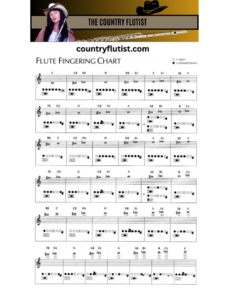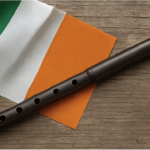 Starting out on the flute can be exciting—but also a little overwhelming. One of the first things new flutists need to learn is how to read a flute fingering chart. These charts are essential for helping you understand which keys to press for each note on the flute. If you’re a beginner (or a parent helping a beginner), this guide will walk you through how to read and use a flute fingering chart effectively.
Starting out on the flute can be exciting—but also a little overwhelming. One of the first things new flutists need to learn is how to read a flute fingering chart. These charts are essential for helping you understand which keys to press for each note on the flute. If you’re a beginner (or a parent helping a beginner), this guide will walk you through how to read and use a flute fingering chart effectively.
What Is a Flute Fingering Chart?
A flute fingering chart is a visual guide that shows you which fingers go where to produce each note. It’s like a map of the flute, helping you navigate from low B to high C and everything in between.
Each diagram typically represents the flute’s key system, with filled-in circles showing which keys to press and open circles showing which to leave alone.
Parts of a Fingering Chart
When you look at a fingering chart, you’ll see diagrams of the flute laid out vertically, often in three sections:
-
Left hand (top section) – These are the keys you press with your left hand, usually the top part of the flute.
-
Right hand (middle and bottom section) – These show the keys for your right-hand fingers.
-
Thumb and pinky keys – Special symbols or extra diagrams may show the thumb and right-hand pinky keys, which vary from note to note.
Some charts also indicate optional keys or alternates, which are helpful as you advance.
How to Use the Chart
-
Find the note you want to play – Most charts are organized by note names (A, B, C#, etc.).
-
Look at the diagram – The chart will show you which keys to press.
-
Match your fingers – Use the chart to position your fingers correctly on the flute.
-
Play and listen – Try playing the note and compare the sound to a tuner or teacher to make sure it’s correct.
Tips for Beginners
-
Start with easy notes like B, A, and G—these use fewer keys and are easier to play.
-
Don’t press too hard. The keys need only a light touch to function correctly.
-
Keep your hands relaxed. Tension makes it harder to move quickly between notes.
-
Practice daily to help your fingers remember the patterns.
A Helpful Resource
To make learning easier, I offer a free downloadable flute fingering chart right here on CountryFlutist.com. It’s designed for beginners, clear and easy to follow—perfect for printing and keeping in your flute folder.
Final Thoughts
Understanding flute fingerings is the foundation of your playing. Once you’re comfortable reading fingering charts, you’ll be able to learn new notes quickly and confidently. And remember, a good teacher will help you not only read the chart but also apply it as you play songs and exercises.
Want to learn more?
I teach beginner and intermediate flute students both in person and online. Visit the Flute Lessons page to get started today.








